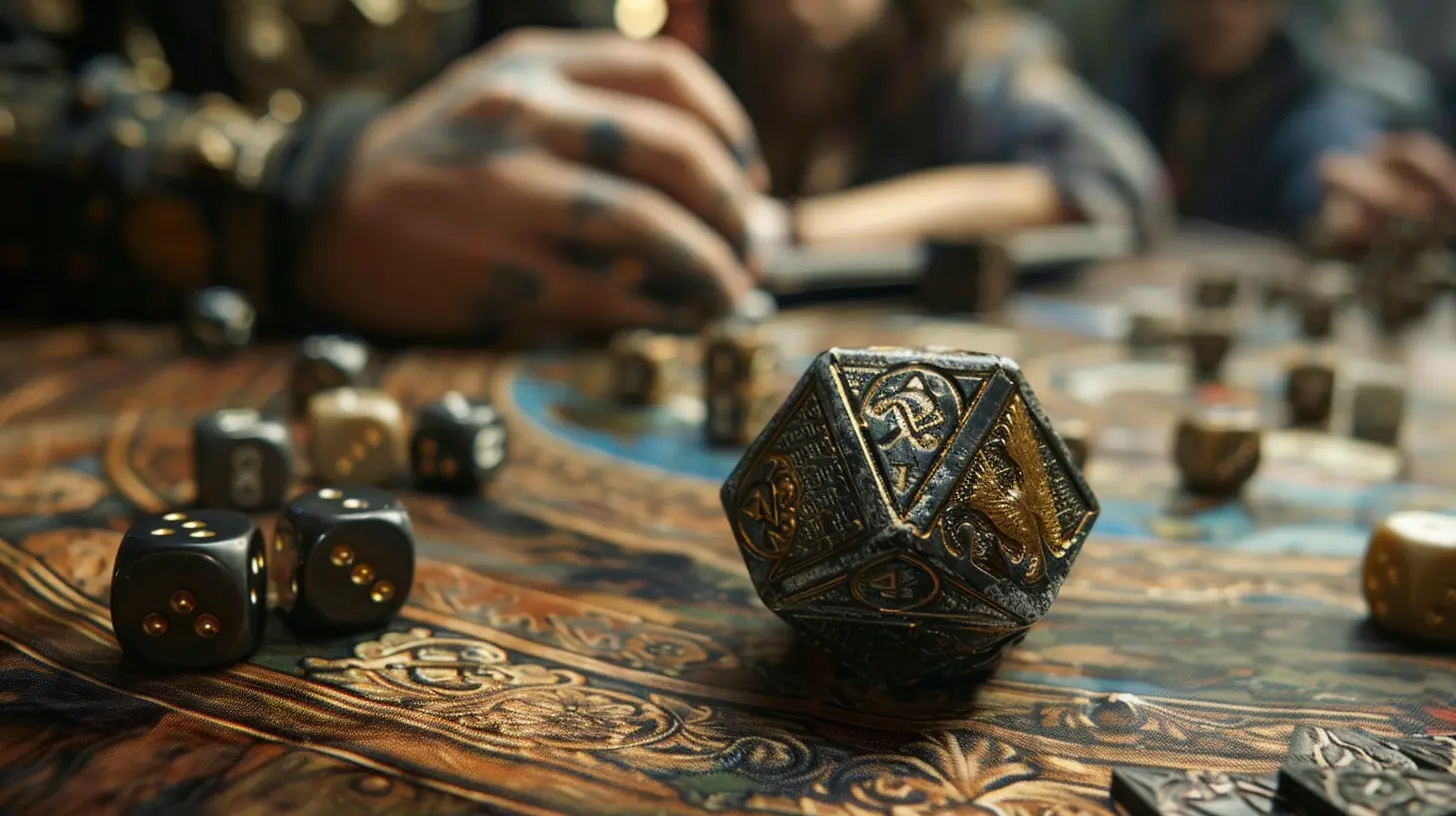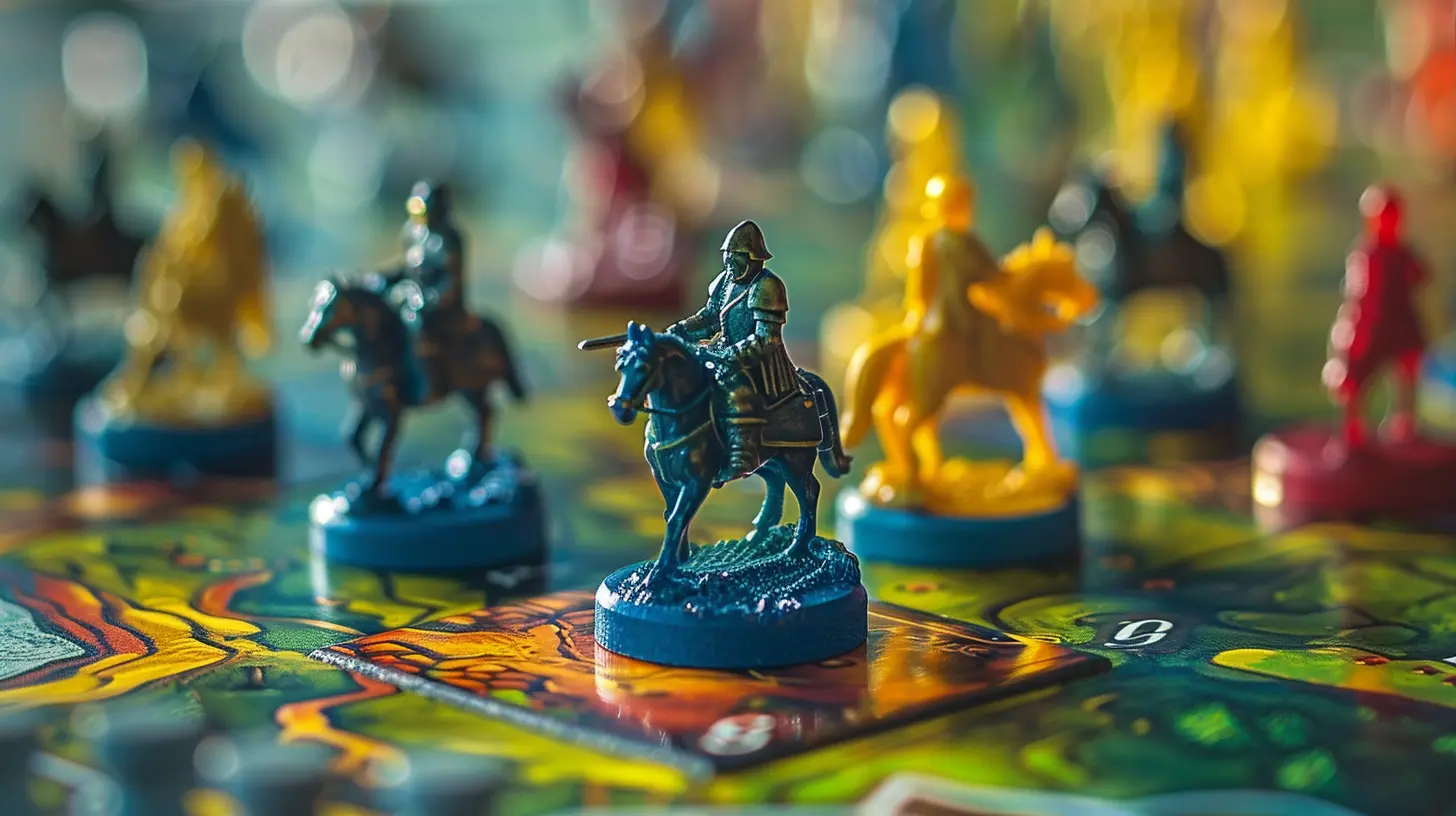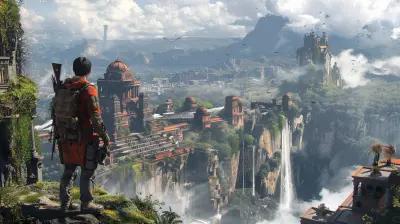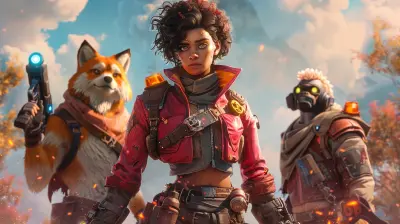Game Mechanics That Break the Mold: Innovative Ideas in Recent Titles
5 June 2025
Let’s be real—most games follow a formula. You hit the tutorial, learn the basics, grind through levels, slap on a few upgrades, and roll credits. But sometimes, a game comes along that just throws the rulebook out the window. It introduces a mechanic so fresh, so out-of-nowhere, it makes you sit back and think, “Wait... why hasn’t anyone done this before?”
That’s exactly what we’re diving into today. We’re going knee-deep into the most groundbreaking, mold-breaking game mechanics in recent titles that have shaken up the way we play. So whether you’re a game dev looking for inspiration or just a gamer who craves something different, buckle up. Here are the game mechanics that flipped the script.
What Makes a Game Mechanic "Innovative"?
Before we get into the juicy stuff, let’s answer the basics. What actually counts as an “innovative” game mechanic?Think of it like adding jalapeños to your vanilla ice cream—it’s not just about mixing things up but creating something that somehow works, even if it sounds weird on paper.
We’re talking about:
- Completely new gameplay concepts
- Unique interactions or control schemes
- Mechanics that shift how players approach strategy or storytelling
- Systems that take old ideas and twist them in creative ways
Now, let’s check out the games that did exactly that.
1. Death is the Beginning – "Deathloop"
Remember when dying in a game just meant a sad reload screen? Yeah, well, Deathloop laughed at that idea and decided to make death part of the experience.Time Loop as Gameplay
In Deathloop, you're stuck in a time loop. But—and here's the kicker—it’s not just a story gimmick. The entire game revolves around learning patterns, experimenting, and dying over and over... and that’s exactly how you progress.It’s like playing Groundhog Day with guns and chaos. Each loop teaches you something new, letting you plan your next move more effectively. Strategy blends seamlessly with trial and error, not frustration.
Why it works: It turns failure into fun. You're not punished for dying; you're encouraged to play around and figure out the pieces of the puzzle in your own time.
2. Talk Your Way Out – "Disco Elysium"
Combat? Meh. Disco Elysium doesn’t care about your sword or your gun. This detective RPG went all-in on dialogue... and made your brain the biggest weapon.Thought Cabinet and Internal Dialogue
The game throws traditional RPG stat systems in the trash. Instead, you level up things like “Inland Empire” or “Volition.” These aren't spells or attacks—they're parts of your personality that talk to you as you play.You might stroll past a suspect, and your Logic skill goes, “Hey buddy, he’s lying.” Or your Drama skill screams, “Fake it till you make it!” It’s like having a noisy, chaotic council in your head with every decision you make.
Why it works: It pulls you deep into the mind of your character. Your build doesn’t just affect the outcomes—it literally talks to you about them. Brilliant, weird, and unique.
3. Change Reality with a Camera – "Viewfinder"
This one is mind-bending in the best way.Photos That Alter the World
In Viewfinder, you use a Polaroid-style camera to take pictures—and then place those pictures into the 3D world to change the environment. Take a photo of a bridge? You're now building a new bridge with that photo.It’s a fresh take on puzzle-solving that messes with spatial logic. It's like combining MC Escher with Minecraft and a sprinkle of Portal. Your brain might hurt a little, but in a good way.
Why it works: It's one of those "Whoa!" moments when you realize you're not just interacting with the world—you're remaking it in real time.
4. Your Choices Don’t Just Matter – They Stick – "Undertale"
Okay, Undertale isn't exactly new, but it’s still one of the clearest examples of innovative design that’s inspired countless others.Moral Consequences That Persist
Most games reset everything when you restart. Not Undertale. It remembers your choices—even across new save files.If you decided to go on a murder spree and then switch to a pacifist run, the game calls you out. It breaks the fourth wall and makes morality not just a statistic but a theme that lingers.
Why it works: It challenges the “clean slate” concept in gaming. Your actions have real, long-term consequences, even if you try to rewrite history.
5. Physical Movement & VR Integration – "Half-Life: Alyx"
VR has been around for a while, but not many developers pushed it past surface-level gimmicks. Half-Life: Alyx, though? Total game-changer.Realistic VR Interactions
From reloading your gun with manual hand movements to tearing apart environments for hidden health packs, Alyx feels like you’re actually there.Need ammo? Fumble for it on your shoulder. Reloading? Better practice that muscle memory. The game built its mechanics fully around immersion, not just visuals.
Why it works: It doesn’t force VR into a traditional game—it builds a game that could only exist in VR. That’s how you take tech and turn it into innovation.
6. The Controller as a Storyteller – "Astro’s Playroom"
Who thought a controller could deliver emotional storytelling?Haptic Feedback & DualSense Magic
Astro’s Playroom was partly a tech demo for the PS5's DualSense controller, but it turned out to be a lesson in how feel can replace cutscenes.You feel the wind rush, the pitter-patter of rain, or sand slipping beneath your feet—all through vibrations and triggers. At one point, you don't just see what’s happening; you feel it with such clarity that it becomes part of the narrative.
Why it works: It transformed a device we often overlook (the controller) into part of the storytelling toolbox.
7. Time Control in Combat – "SUPERHOT"
Shooters are usually about twitch reflexes. Duck, aim, fire, repeat. But SUPERHOT turned that idea into something else entirely.Time Only Moves When You Do
In SUPERHOT, time is frozen unless you move. That turns every action into a deliberate, chess-like choice. Dodge, shoot, sidestep—it all becomes a cool, balletic puzzle.It’s like someone mashed John Wick with The Matrix and gave you the choreographer’s job. Combat becomes thoughtful, not just frantic.
Why it works: It encourages mastery through mindfulness. You can't button-mash your way through this. You gotta think.
8. Creating Culture and Identity – "Citizen Sleeper"
This indie gem blends tabletop RPG mechanics with cyberpunk storytelling in a way that feels deeply personal.Dice Rolls Meet Daily Survival
Every day, you roll a set of digital dice, and each one represents a possible action. High numbers mean better outcomes, but with limited dice—and dwindling resources—you’ve got to make hard calls.Sleep or eat? Help a friend or pay off debt? The randomness mirrors real-life uncertainty, especially in broken systems.
Why it works: It turns scarcity into a mechanic that’s not just about stats... it’s about who you choose to be when you can’t do everything.
9. Environmental Storytelling via Tools – "Outer Wilds"
This one’s a brain-bender of the best kind.Space Exploration Driven by Curiosity
In Outer Wilds, your only tool is knowledge. You’re not leveling up. No XP bars. No grinding.Instead, you explore a solar system trapped in a 22-minute time loop. Every planet has secrets, but the universe resets constantly. You don’t beat the game by getting stronger—you win by understanding how it all fits together.
Why it works: It rewires your brain to chase information rather than upgrades. Curiosity becomes currency.
10. Nonlinear Storytelling & Player Memory – "Return of the Obra Dinn"
How do you solve a mystery with no clues? By piecing together memories of the dead.Deduction-Based Progression
In Return of the Obra Dinn, you're an insurance investigator. Sounds boring, right? But get this: Your job is to figure out how 60 people died on a ghost ship—using snapshots of their final moments in time.You get no hints. No journal tracking. Just you, your brain, and a monochrome world of cause-and-effect.
Why it works: It trusts the player. No hand-holding. Just logic, perception, and one seriously unique art style.
Why Do These Mechanics Matter?
Because we're bored of the same old stuff. These mechanics aren’t just cool—they’re a beacon for creativity in an industry that sometimes plays it safe.They show us that innovation doesn’t need massive budgets—just fresh ideas. When executed well, a unique mechanic can define a game and set the standard for what comes next.
Final Thoughts
Gaming has always been a space for experimentation, even if it doesn’t always feel that way. But when devs take big swings—when they risk being different—that’s where the magic happens.And as players, we get to benefit from those risks. We get to experience moments that stick with us: the first time time froze in SUPERHOT, or when you realized Disco Elysium was psychoanalyzing you. These aren't just “mechanics.” They're memories.
So next time you boot up a game, ask yourself—what's this one doing differently? You might just stumble into the next big innovation.
all images in this post were generated using AI tools
Category:
Game ReviewsAuthor:

Kaitlyn Pace
Discussion
rate this article
3 comments
Petra McClary
Fantastic read! It's inspiring to see how innovation continues to shape gaming experiences in exciting ways.
June 15, 2025 at 2:54 PM

Kaitlyn Pace
Thank you! I'm glad you found it inspiring—innovation in gaming truly opens up new possibilities!
Archer Clarke
Wow, breaking the mold? Next, they'll invent a game where you actually have to play!
June 11, 2025 at 4:59 PM

Kaitlyn Pace
Thanks for your comment! Innovation in games often pushes boundaries, and we're excited to see where creativity takes us next!
Rosalind McCollum
Who knew jumping on jellybeans could revolutionize gameplay? 🎮✨ These innovative mechanics are like kaleidoscopes for gamers—twisting, turning, and sparking joy in ways we never imagined. Can’t wait for the next flavor of fun!
June 6, 2025 at 2:54 PM

Kaitlyn Pace
Thank you! It's amazing how fresh mechanics can transform gameplay. Excited to see where innovation takes us next!



